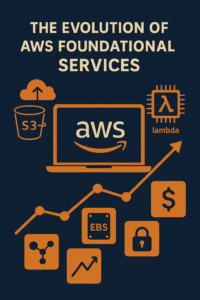Team,
If you been following me, you know that I work a lot with VMware Infrastructure. There is the free eSXI hypervisor that is popular, and available. There is the vCenter server/appliance that links many eSXI Hypervisors together, allowing for administration of several hosts under one location. But there is also a critical part of VMware infrastructure called v-Motion.
VMware’s v-Motion is so awesome, and by the end of my post, you are going to agree with me 100% regarding that statement!
VMware v-Motion enables the live migration of running virtual machines from one physical server to another with zero downtime, and is completely transparent to users. This is also called HA – or High Availability. This term is heard alot in the tech industry because it is a general term that can be used to express other technologies from other manufacturers that implement minimal downtime with their products.
So…… How Does It Work????
Live migration of a virtual machine from one physical server to another with VMotion is enabled by three underlying technologies. First, the entire state of a virtual machine is encapsulated by a set of files stored on shared storage such as Fibre Channel or iSCSI Storage Area Network (SAN) or Network Attached Storage (NAS). VMware’s clustered Virtual Machine File System (VMFS) allows multiple installations of ESX Server to access the same virtual machine files concurrently.Second, the active memory and precise execution state of the virtual machine is rapidly transferred over a high speed network, allowing the virtual machine to instantaneously switch from running on the source ESX Server to the destination ESX Server. VMotion keeps the transfer period imperceptible to users by keeping track of on-going memory transactions in a bitmap. Once the entire memory and system state has been copied over to the target ESX Server, VMotion suspends the source virtual machine, copies the bitmap to the target ESX Server, and resumes the virtual machine on the target ESX Server. This entire process takes less than two seconds on a Gigabit Ethernet network.Third, the networks being used by the virtual machine are also vir-tualized by the underlying ESX Server, ensuring that even after the migration, the virtual machine network identity and network con-nections are preserved. VMotion manages the virtual MAC address as part of the process. Once the destination machine is activated, VMotion pings the network router to ensure that it is aware of the new physical location of the virtual MAC address. Since the migra-tion of a virtual machine with VMotion preserves the precise execu-tion state, the network identity, and the active network connections, the result is zero downtime and no disruption to users.
So to re-cap, we have 15 Windows servers spread across 3 eSXI (physical) hosts. They are all three connected to a central storage called a SAN, that has 24 drive bays, each with 1TB drives in them. That makes it for roughly 24TB total storage available to the hosts. The three hosts are each connected with a pair (one primary and one redundant) of SAS cables, making it a total of 6 SAS cables connected to the SAN. We are going to take down eSXI Host 1 for maintenance and want to motion over 3 windows 2019 servers to the 2nd host. Because the storage is all centeralized, the only thing we are migrating, or motioning over, is the active resources in use. (There is another feature vMotion uses to migrate storage from one volume to another, or from one SAN to another, but that is another topic) Now SAS which stands for Serial Attached SCSI is very fast. In fact, if your not operating with Fibre, you would want to use SAS in it’s place.


